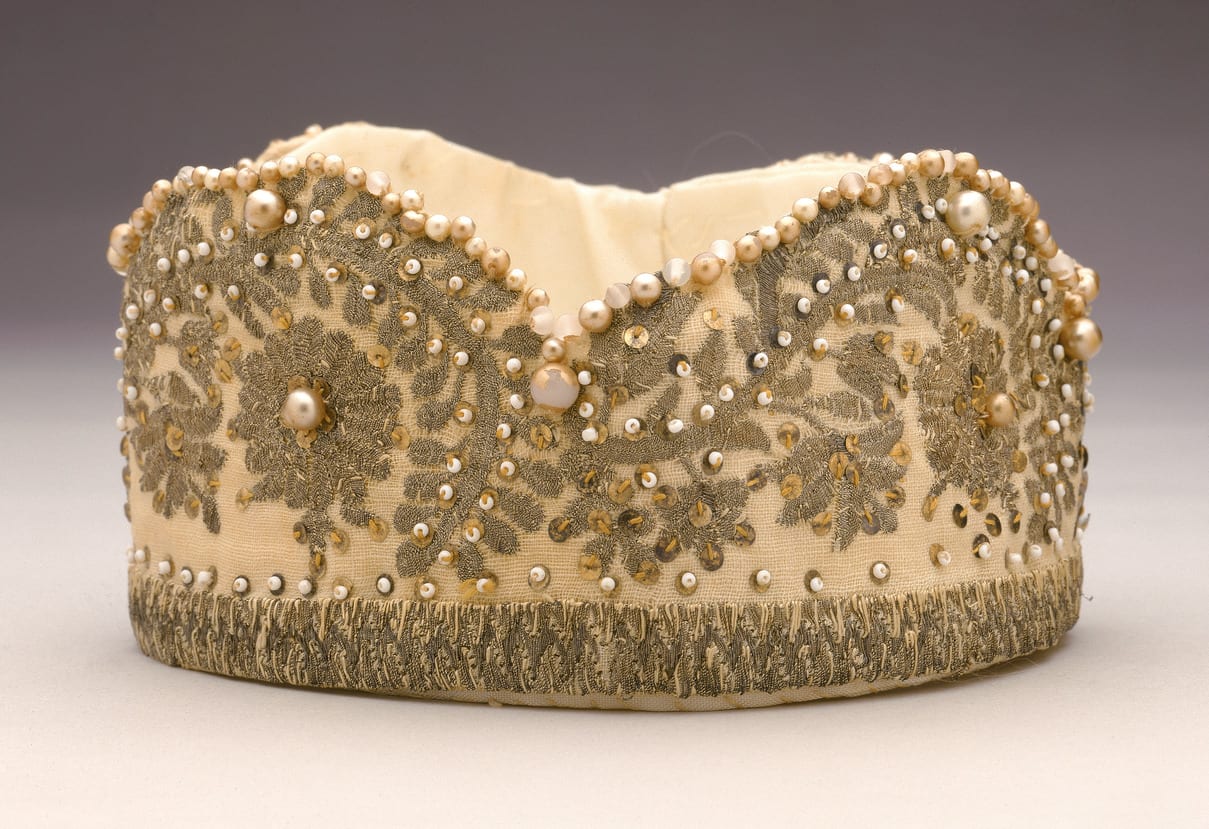
- Object Name:
- Purim Costume Crown
- Place Made:
- United States
- Date:
- 1920-30
- Medium:
- Linen: embroidered with metallic thread; glass and plastic beads
- Dimensions:
- 9 3/4 × 3 1/2 in. (24.8 × 8.9 cm)
- Credit Line:
- Gift of the Zakar and Danzinger Families in memory of their parents Sabetay E. and Tzioa D. Zakar
- Accession Number:
- 1997-44a
Not On View
An early spring holiday, Purim commemorates the deliverance of Persian Jewry from the annihilation planned by the king's vizier, Haman, in the 5th century BCE. His plot was foiled by the Persian queen, Esther, who was Jewish, and by her uncle, Mordecai. The story, told in the biblical Book of Esther, is recorded in scroll form and read on Purim in the synagogue. Purim is further celebrated by feasting, by exchanging gifts of food with friends, and by giving alms to the poor. In keeping with the festivities, costumes are worn on Purim, as part of the general merriment encouraged on the holiday.
This crown was worn by the donor as part of a Purim costume of Queen Esther that also included a vest and a sash. The crown was fabricated from an older textile of hand-woven linen embroidered with gilt metallic thread, probably a hand towel, brought to America by the donor's mother when she emigrated from the Greek island of Corfu in 1913. Home to a Jewish community of long standing, Corfu attracted powers from east and west and for centuries was under the political and cultural influence of Venice.
This crown was worn by the donor as part of a Purim costume of Queen Esther that also included a vest and a sash. The crown was fabricated from an older textile of hand-woven linen embroidered with gilt metallic thread, probably a hand towel, brought to America by the donor's mother when she emigrated from the Greek island of Corfu in 1913. Home to a Jewish community of long standing, Corfu attracted powers from east and west and for centuries was under the political and cultural influence of Venice.
Information may change as a result of ongoing research.